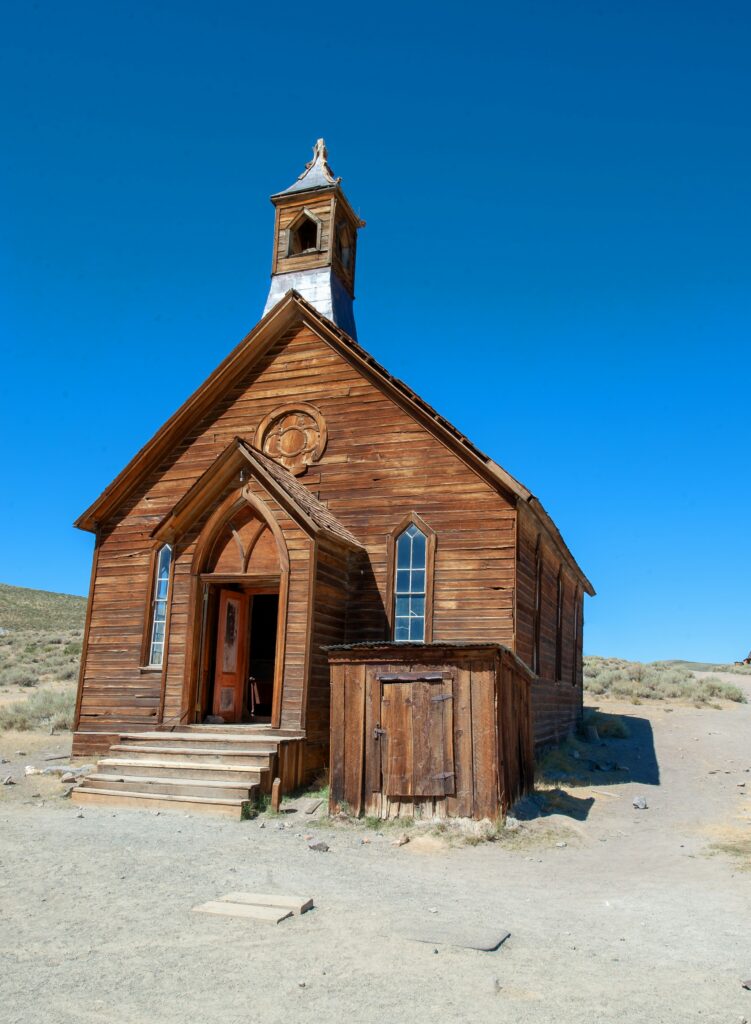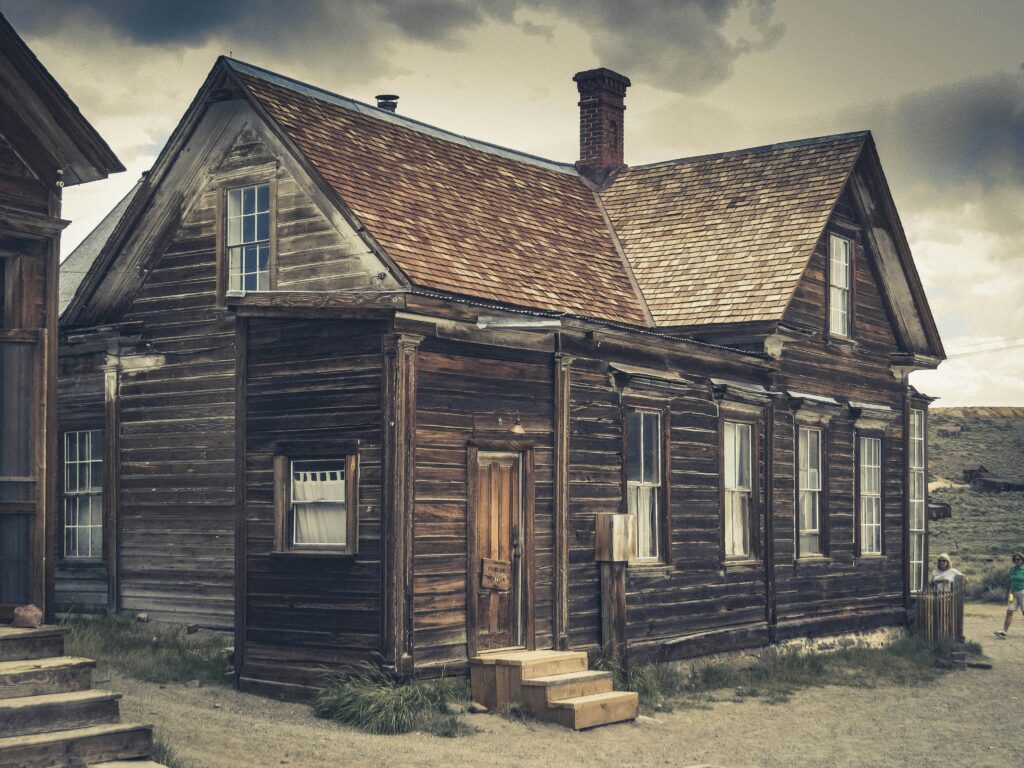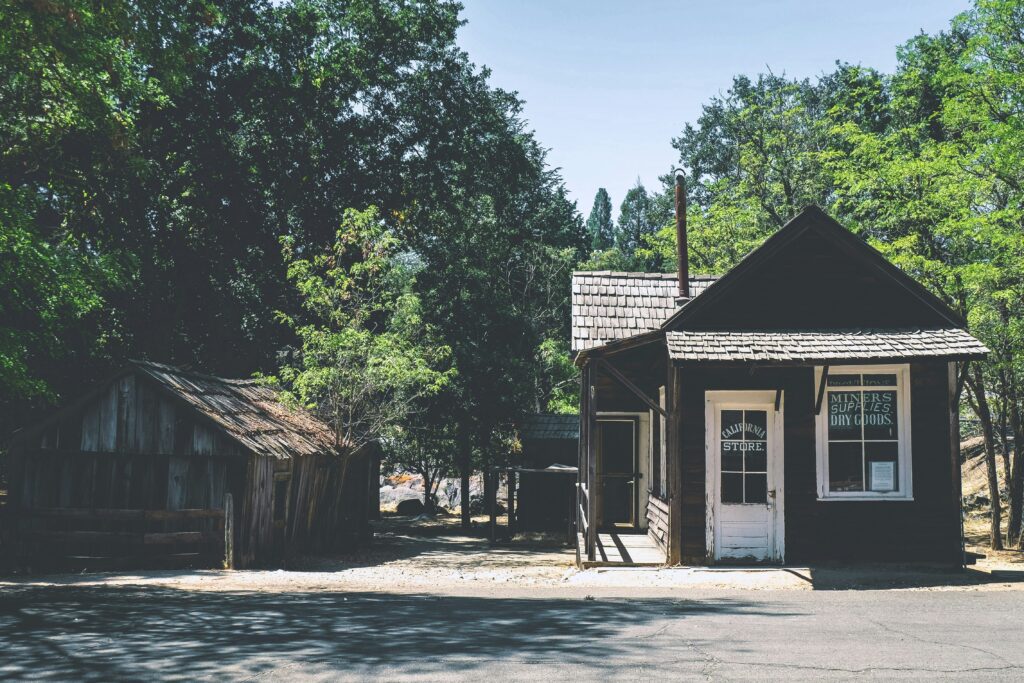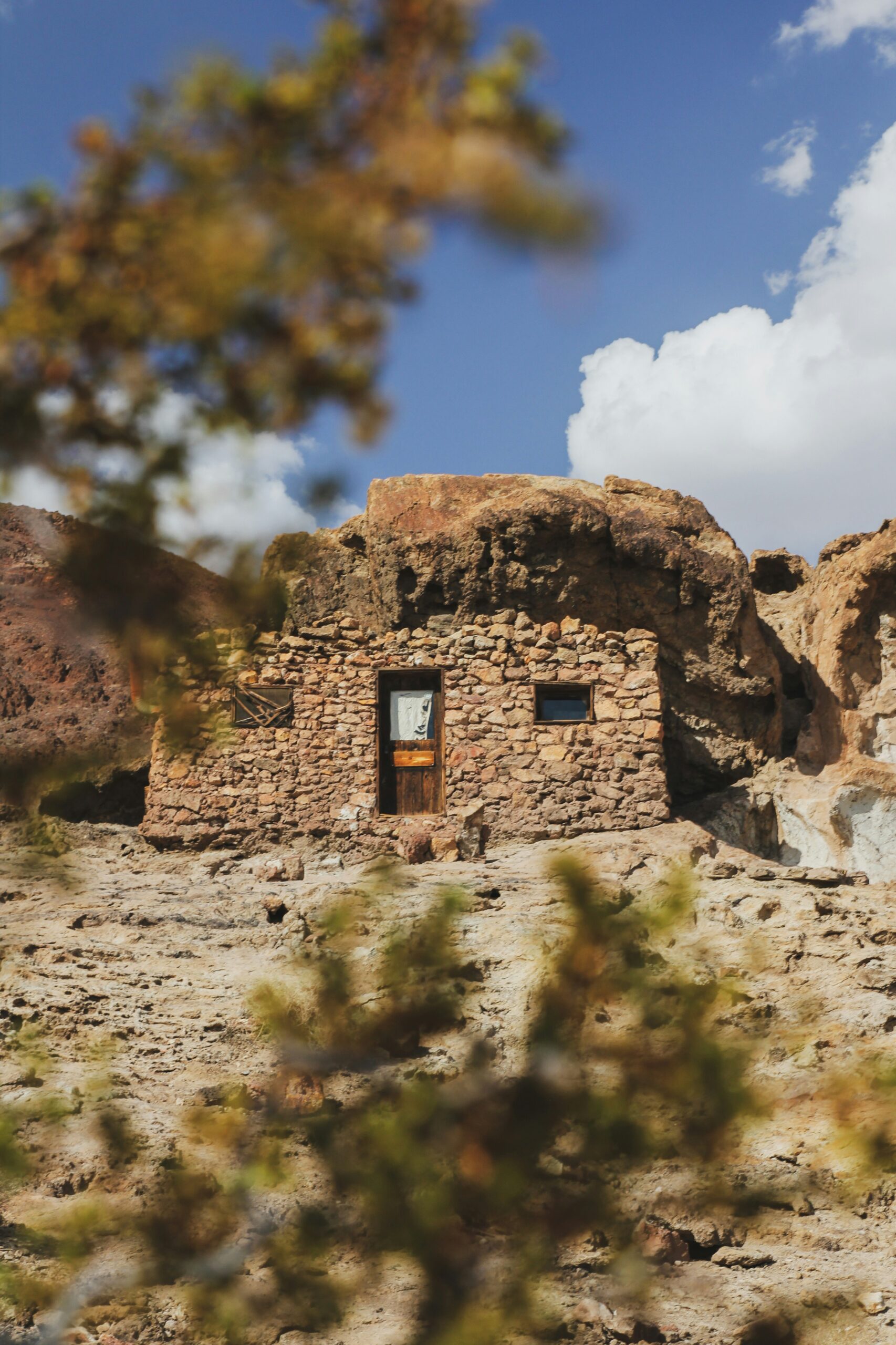Ghost Towns California: Unveiling Hidden Treasures of the Old West
California's ghost towns offer a captivating glimpse into the state's rich history. These abandoned settlements, once bustling with life during the Gold Rush era, now stand as eerie reminders of a bygone age. You'll find these fascinating places scattered across the Golden State, each with its own unique story to tell.

California ghost towns provide an unforgettable travel experience, allowing you to step back in time and explore the remnants of the past. From abandoned mining camps to former internment sites, these historic locations offer a diverse range of experiences. You can wander through deserted streets, peek into weathered buildings, and imagine the lives of those who once called these places home.
As you plan your ghost town adventure, you'll discover a variety of options to choose from. Some sites, like Bodie State Historic Park, are well-preserved and offer guided tours. Others are more remote, requiring a bit of exploration to uncover their hidden treasures. Whether you're a history buff, a photography enthusiast, or simply looking for a unique day trip, California's ghost towns are sure to captivate your imagination and leave you with lasting memories.
Ghost Towns California: Unveiling Hidden Treasures of the Old West
The Allure of Ghost Towns in California
California's ghost towns transport you back to the heady days of the Gold Rush and silver mining boom. These abandoned settlements offer a unique glimpse into the past, frozen in time.
As you wander through dusty streets, you'll encounter weathered wooden buildings and rusted machinery. The eerie silence is broken only by the whisper of wind through empty doorways.
Bodie State Historic Park stands out as one of the best-preserved ghost towns in the United States. You can explore over 100 structures in a state of “arrested decay.”
Many ghost towns have colorful histories:
- Lawless saloons
- Gunfights in the streets
- Tales of fortunes made and lost
For the adventurous traveler, visiting these sites offers a thrilling blend of history and mystery. You might even encounter some of the haunted locations that pepper these abandoned towns.
Your journey through California's ghost towns can include:
- Peeking into old mine shafts
- Examining antique artifacts
- Imagining life during the boom times
Each town tells a unique story of hope, hardship, and eventual abandonment. As you explore, you'll gain a deeper appreciation for the resilience of early settlers and the fleeting nature of prosperity.

Bodie: A State Historic Park
Bodie State Historic Park offers a unique glimpse into California's gold rush era. You can explore this well-preserved ghost town and experience the authentic remnants of a once-thriving mining community.
History of Bodie
Bodie's story began in 1859 when W.S. Body discovered gold in the area. The town quickly grew into a bustling mining community with a population of around 8,000. At its peak, Bodie boasted nearly 2,000 buildings, including saloons, stores, and a red-light district.
As gold reserves dwindled, Bodie's population declined. By the 1940s, it had become a ghost town. In 1962, the California State Legislature established Bodie State Historic Park to preserve this slice of history.
Today, Bodie stands as California's official state gold rush ghost town, capturing the essence of the Wild West.
Visiting Bodie Today
When you visit Bodie, you'll step back in time as you wander its deserted streets. The park maintains a state of “arrested decay,” preserving buildings and artifacts as they were found.
You can peek through windows to see interiors frozen in time, with peeling wallpaper and abandoned furniture. The museum offers insights into daily life during Bodie's heyday.
To reach Bodie, take State Route 270 east from Highway 395. The park is open year-round, but winter access may be limited. Admission is $8 for adults and $5 for children, with kids under three entering free.
Remember to bring water, snacks, and sun protection, as services are limited. Enjoy your step back into California's golden past!

California Gold Rush and Its Ghost Towns
The California Gold Rush left an indelible mark on the state's landscape, giving rise to numerous boomtowns that later became ghost towns. You can still explore these remnants of a bygone era, each telling a unique story of ambition, hardship, and eventual abandonment.
Shasta and Its Historical Impact
Shasta, once a thriving Gold Rush town, now stands as a testament to California's mining history. You'll find Shasta State Historic Park just west of Redding, where you can walk down the old main street lined with brick buildings from the 1850s.
As you explore, you'll see the restored courthouse museum, filled with artifacts from the town's heyday. Don't miss the ruins of the general store and the old blacksmith shop. These crumbling structures offer a glimpse into daily life during the Gold Rush era.
Shasta's decline began when the railroad bypassed the town, but its legacy lives on. You can almost hear the echoes of miners and merchants as you stroll through this well-preserved ghost town.
North Bloomfield and Hydraulic Mining
North Bloomfield, nestled in the Sierra Nevada foothills, tells the story of hydraulic mining's impact on California's landscape. As you visit, you'll see the scars left by powerful water cannons that once blasted away entire hillsides in search of gold.
The town's boom was short-lived due to the devastating environmental effects of hydraulic mining. You can still see the old monitor (water cannon) on display, a stark reminder of the destructive power of gold fever.
Take a guided tour to learn about the Sawyer Decision of 1884, which effectively ended hydraulic mining and led to North Bloomfield's decline. The town's preserved buildings and mining equipment offer a fascinating look at this controversial chapter in California's history.
Exploring the Town of Calico
Step back in time as you wander through the dusty streets of Calico, a well-preserved relic of California's silver mining boom. This historic ghost town offers a unique glimpse into the lives of 19th-century miners and settlers.
Calico Ghost Town Regional Park
You'll find Calico nestled in the Mojave Desert, now preserved as a regional park. As you explore, you'll encounter restored and reconstructed buildings from the 1880s. Don't miss the chance to ride the narrow-gauge train or try your hand at gold panning.
The Mystery Shack is a must-visit attraction where you'll experience mind-bending optical illusions. For history buffs, two museums showcase artifacts and stories from Calico's heyday.
The Silver Rush in Calico
Calico's story began in 1881 when silver was discovered in the surrounding mountains. You can imagine the excitementas thousands flocked to the area, hoping to strike it rich. At its peak, Calico boasted a population of 5,000 residents and over 500 mines.
The town thrived for about 12 years, producing an impressive $86 million in silver ore. You can still explore some of the old mine shafts and imagine the challenging life of a 19th-century miner. By 1896, silver prices plummeted, and Calico's boom days came to an end.

Preserving History: Ghost Towns as Parks
Ghost towns in California offer a unique glimpse into the past. These abandoned settlements have been transformed into parks, allowing you to step back in time and experience history firsthand.
Historic Parks of California
California's state parks system includes several well-preserved ghost towns. Bodie State Historic Park is a prime example, offering you a chance to explore a genuine California gold-mining ghost town. As you walk down the deserted streets, you'll see structures frozen in time.
The park maintains about 100 buildings in a state of “arrested decay.” This means you can witness the authentic atmosphere of an abandoned town without modern renovations spoiling the experience.
Another notable site is Columbia State Historic Park. Here, you can immerse yourself in a living gold rush town. Costumed interpreters and functioning businesses transport you to the 1850s.
Engaging with Preservation
You can actively participate in preserving these historical sites. Many parks offer volunteer programs where you can assist with maintenance and restoration efforts.
At Bodie, you might help stabilize buildings or catalog artifacts. These hands-on experiences deepen your connection to history.
Educational programs are also available. You can attend workshops on historical preservation techniques or join guided tours to learn about the challenges of maintaining these sites.
By visiting these parks, you're supporting their continued preservation. Your entrance fees and souvenir purchases contribute to ongoing conservation efforts, ensuring future generations can enjoy these windows into the past.

Off the Beaten Path: Lesser-Known Ghost Towns
California's abandoned towns offer fascinating glimpses into the past. Beyond the well-known sites, hidden gems await those willing to explore further.
Drawbridge: Silicon Valley's Ghost Town
Nestled in the marshlands of San Francisco Bay, Drawbridge stands as a testament to a bygone era. This former railroad town, once home to 1,000 residents, now sits abandoned and slowly sinking into the mud. You'll find it hard to believe that such a quiet place exists near bustling Silicon Valley.
Drawbridge's last resident left in 1979, leaving behind weathered buildings and eerie silence. Access is tricky, as the town is now part of a wildlife refuge. However, you can catch glimpses from nearby trails or organized tours.
The town's history is as unique as its location. Founded in the 1880s, it thrived on hunting, fishing, and railroad operations. Today, nature reclaims the area, creating a hauntingly beautiful landscape.
The Remains of Panamint City
Deep in Death Valley National Park lies Panamint City, a true hidden gem of California's ghost towns. This remote silver mining town boomed briefly in the 1870s before being destroyed by a flash flood in 1876.
Reaching Panamint City requires a challenging 5-mile hike through rugged terrain. Your efforts will be rewarded with stunning views and fascinating ruins. The town's most iconic feature, a 25-foot brick chimney, still stands tall against the desert backdrop.
During its heyday, Panamint City gained notoriety as one of the West's wildest towns. Outlaws and prospectors mingled in its saloons and brothels. Today, you can explore the remnants of this colorful past, including old mining equipment and crumbling stone walls.
Be sure to bring plenty of water and sun protection for your visit. The harsh desert environment that contributed to Panamint City's demise remains a formidable force.
Death Valley's Ghostly Remnants
Death Valley harbors eerie reminders of bygone eras. You'll find abandoned settlements that once bustled with gold-seekers and dreamers, now silent witnesses to the harsh desert environment.
Rhyolite: A Ghost Town of Decay
As you approach Rhyolite, you'll be struck by its grand ruins. This former boomtown, just outside Death Valley's eastern border, reached its peak in 1907 with nearly 5,000 residents. You can still see the remnants of a three-story bank building and an opera house.
Wander through the crumbling structures and imagine the lively streets filled with hopeful miners. The town's rapid decline began in 1908, and by 1920 it was deserted. Today, you can explore the old train depot and the famous Bottle House, built entirely from discarded bottles.
Skidoo and the Tales Left Behind
Venture into the heart of Death Valley to discover Skidoo, a gold mining town with a colorful past. Founded in 1906, it thrived for barely a decade before being abandoned. You'll find fewer visible remains here, but the stories are just as captivating.
Skidoo boasted a population of 700 at its peak, complete with a school, stores, and saloons. As you explore, picture the town's most infamous event – the 1908 lynching of Joe “Hootch” Simpson, a local troublemaker. Today, only scattered debris and the remnants of the stamp mill hint at Skidoo's golden age.
Architectural Footprints: Foundations and Main Streets
As you stroll through California's ghost towns, you'll find yourself transported back in time. The architectural remnants tell a story of the past, with foundations and main streets serving as silent narrators.
You'll notice the sturdy foundations of buildings that once bustled with activity. These stone and brick bases have withstood the test of time, offering glimpses into the town's former layout.
Main streets, once the lifeblood of these communities, now stand eerily quiet. You can almost imagine the clatter of horse hooves and the chatter of townsfolk as you walk along these historically preserved thoroughfares.
In many ghost towns, you'll find a mix of architectural styles. From simple wooden structures to more elaborate brick buildings, each reflects the town's evolution and prosperity during its heyday.
Mining history is often evident in the architecture. Look for remnants of stamp mills, ore processing facilities, and the iconic headframes of mine shafts dotting the landscape.
Some ghost towns have been carefully preserved in a state of “arrested decay”. This means you can explore historical sites that maintain their authentic feel without falling into complete ruin.
As you wander, keep an eye out for:
- Old saloons with swinging doors
- General stores with faded signage
- Banks with imposing facades
- Schools and churches that once served the community
These architectural footprints offer you a tangible connection to California's rich past, allowing you to step back in time and experience the golden era of these now-silent towns.
Cemeteries and Their Stories
As you explore California's ghost towns, you'll find their cemeteries offer a poignant glimpse into the past. These burial grounds tell tales of hardship, hope, and the fleeting nature of frontier life.
In Bodie, one of the state's most famous ghost towns, the cemetery sits on a windswept hill. You'll see weathered headstones bearing the names of miners, children, and pioneers who once called this boomtown home.
Calico's cemetery, perched on a rocky slope, paints a similar picture. As you wander among the graves, you'll notice many markers for those who died young, highlighting the harsh realities of life in these remote settlements.
Some ghost town cemeteries are said to be haunted. In Hornitos, locals claim to hear whispers and see shadowy figures near the old burial ground. Whether you believe in ghosts or not, these stories add an extra layer of intrigue to your visit.
Don't miss the Liberty Cemetery, where nearly 500 people were laid to rest. It's a testament to the town's once-thriving community and the dreams that brought settlers westward.
Remember to be respectful as you explore these sacred spaces. They're not just tourist attractions, but final resting places of real people whose stories shaped California's history.

Environmental and Cultural Impact of Ghost Towns
Ghost towns in California offer you a fascinating glimpse into the state's rich history. These abandoned settlements, often former mining towns, have left lasting marks on both the environment and culture.
As you explore these eerie places, you'll notice the environmental impact of past industrial activities. Abandoned mines and equipment can pose safety hazards and contribute to soil and water pollution. However, nature has begun to reclaim many of these areas, creating unique ecosystems.
The cultural significance of ghost towns is immense. They provide you with tangible links to California's Wild West era and the Gold Rush. Walking through preserved streets, you can almost feel the bustling energy of bygone days.
Ghost towns have inspired countless artists, writers, and filmmakers. They've become symbols of the American frontier spirit and the boom-and-bust cycle of resource-dependent communities.
Tourism to these sites helps preserve local history and generates economic activity in nearby towns. Bodie, California's most famous ghost town, attracts visitors from around the world, supporting conservation efforts.
These abandoned places raise important questions about sustainable development and resource management. They serve as reminders of the need to balance economic growth with environmental stewardship.
Visiting Ghost Towns: Things to Do
When you visit California's ghost towns, you'll find a wealth of activities to transport you back in time. Bodie State Historical Park offers one of the best-preserved ghost towns in the United States. Here, you can wander through abandoned buildings and peek into the past.
Gold panning is a popular activity in many ghost towns. Try your luck at striking it rich, just like the original settlers did. Some locations offer guided tours where you can learn about mining techniques.
Many ghost towns feature museums showcasing artifacts from their heyday. You'll get a glimpse into the daily lives of former residents and learn about the town's history.
Narrow-gauge train rides are available in some ghost towns, offering a unique way to explore the area. These scenic journeys let you experience travel as it was in the old days.
Don't forget your camera! Ghost towns provide excellent photo opportunities. Capture the eerie beauty of abandoned buildings and rusty machinery against stunning natural backdrops.
Some ghost towns host special events and reenactments. Check local calendars to see if you can catch a Wild West shootout or a period costume parade during your visit.
Remember to bring comfortable shoes, water, and sunscreen. Many ghost towns are in remote locations with limited amenities, so come prepared for a day of outdoor exploration.







